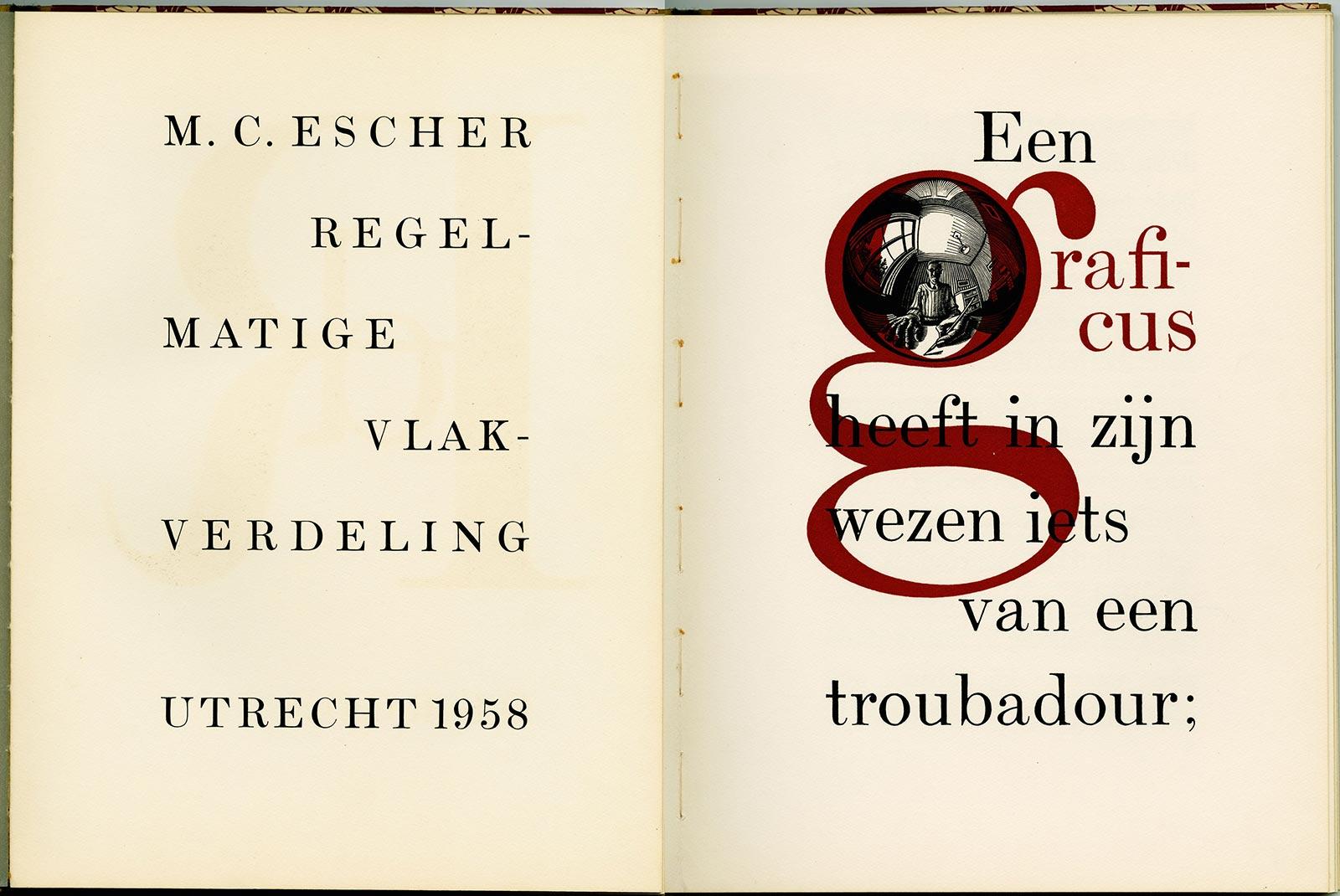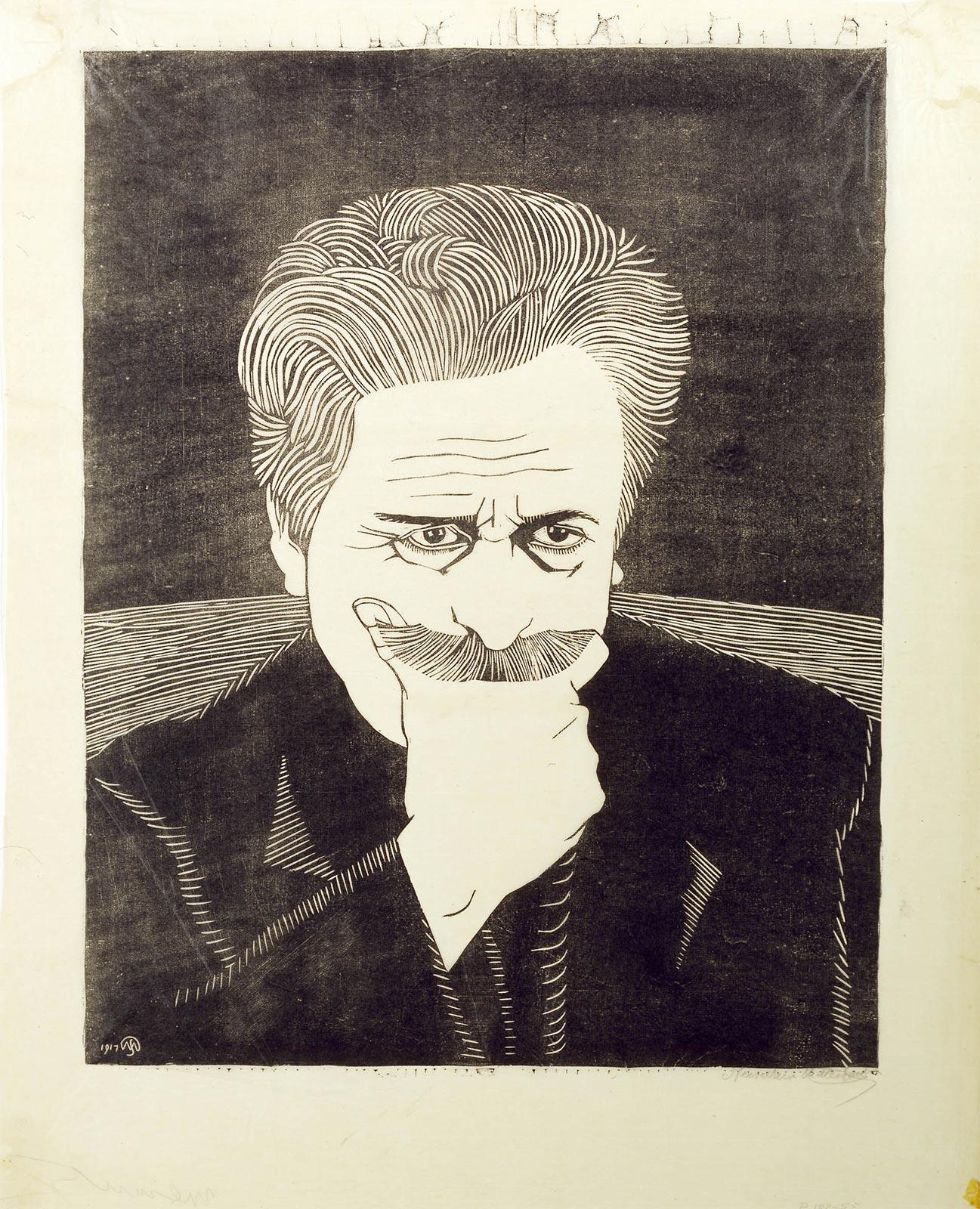
In the years after the war Escher used to take walks after supper in the woods surrounding his house in Baarn. He spent many hours there, to clear his head but also to fill it with new ideas for graphic work. From 1951 onwards he started to write his ideas down in his diary. One of these notes from that year reads the following:
'Traces of car and bicycle tires, perspectively seen, diagonally; Sloping recess filled with water: puddle. In it, the moon is reflected.'
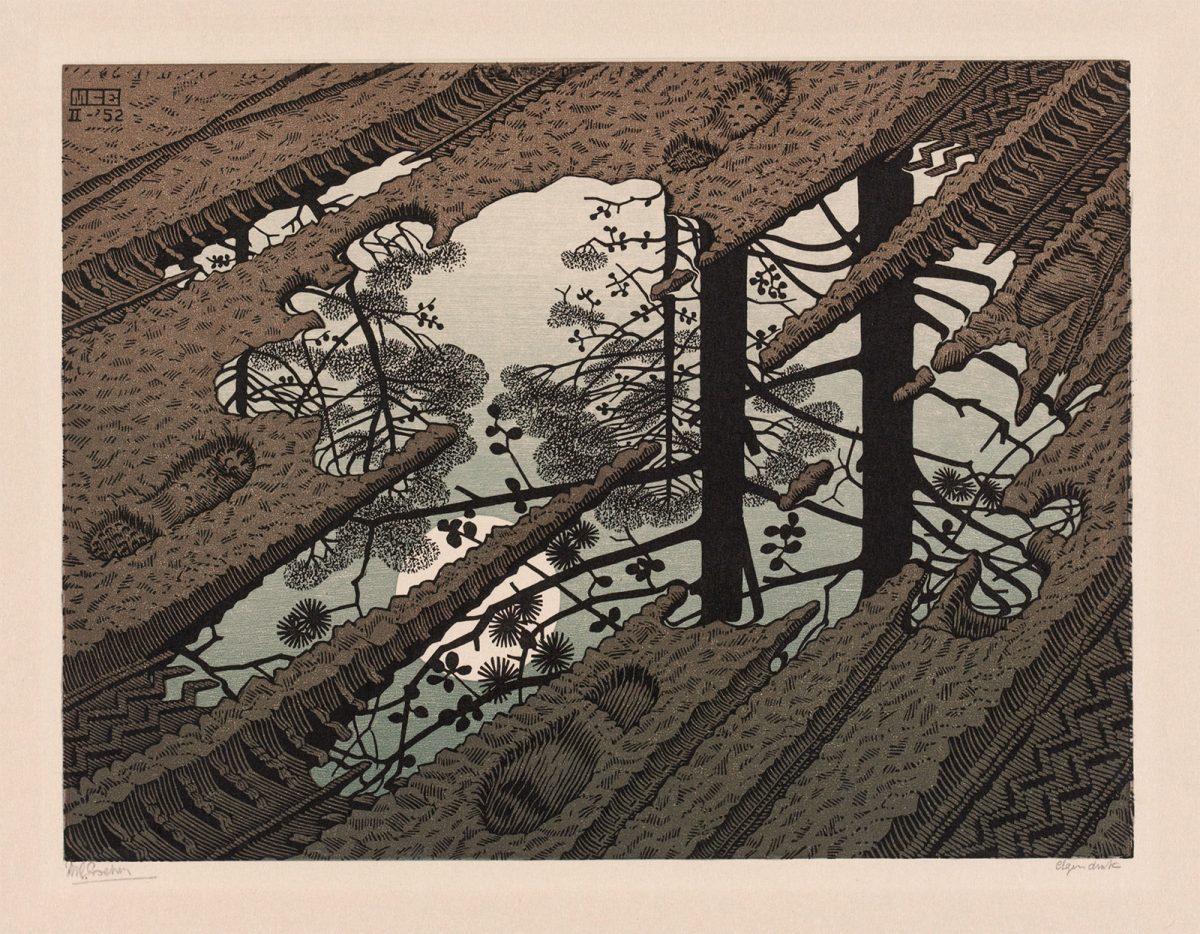
Escher would go on to develop this idea into the woodcut Puddle, from February 1952. He subsequently described this print as follows*:
'The cloudless evening sky is reflected in a puddle which a recent shower has left in a woodland path. The tracks of two motor cars, two bicycles and two pedestrians are impressed in the boggy ground.'
He wrote to his friend Paul Kessler about the print**:
'Although it may seem very impressionistic for someone like me, the symbolic nature of it fascinated me in the manner of Antoine de Saint-Exupéry who, somewhere in Terre des Hommes, says: une mare en relation avec la lune révèle des parentés cachées (A puddle in relation to the moon reveals hidden connections).'
Escher was familiar with the work of the French aviator/writer, who disappeared during a flight over the Mediterranean in 1944. The name of Antoine de Saint-Exupéry is mainly associated with one small book, Le Petit Prince, but he wrote more acclaimed books. In Terre des Hommes, he calls on humanity to take its responsibilities seriously and to show solidarity. Inspired by this book, Edmond Kaiser founded the eponymous NGO in 1960. And also for Escher, the book, in the form of this quote, was a source of inspiration.*** He cut the quote into the woodblock and it also features in the small first series of prints. He later removed it from the block. Spelling out layers and significances in his work so overtly was not his thing.
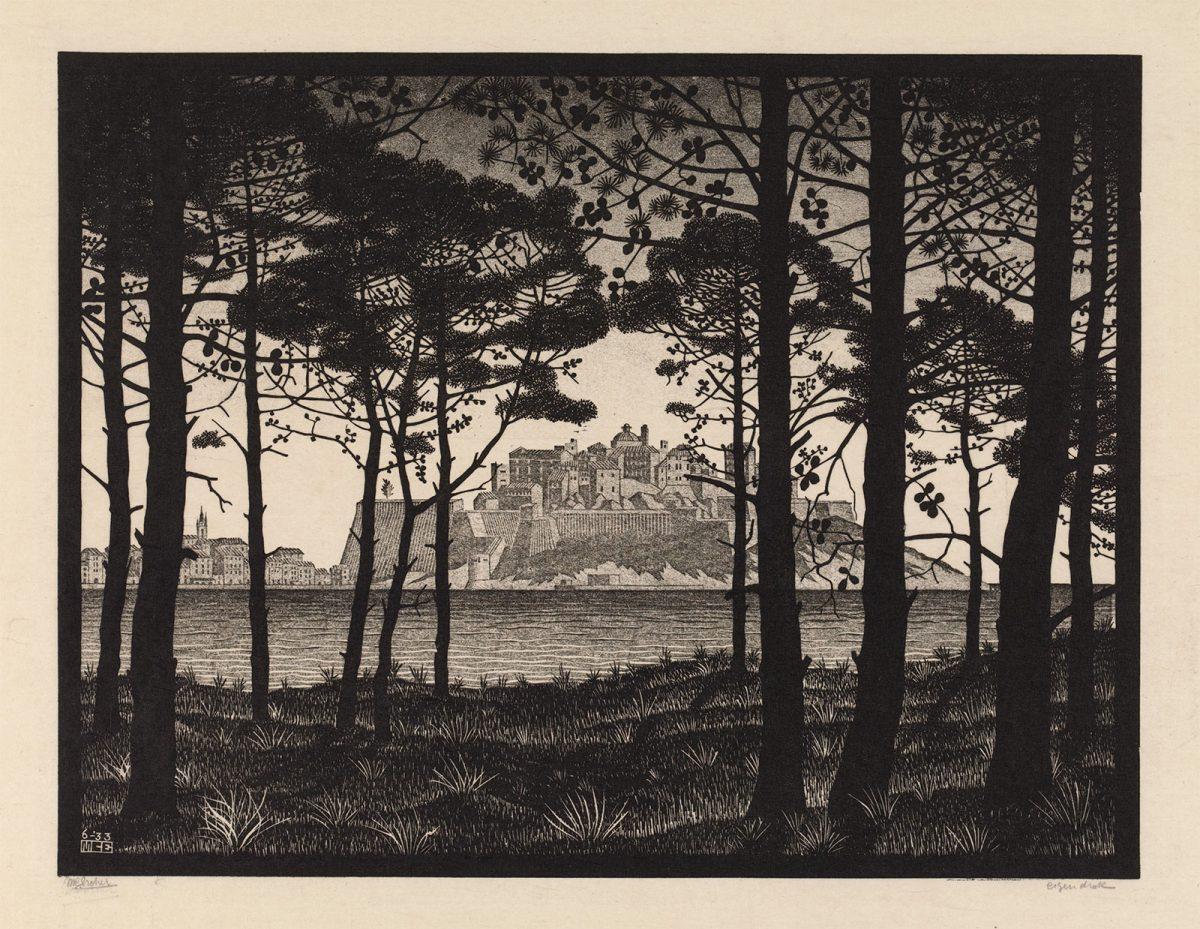
The improbable beauty of the silver glow of the full moon on a cloudless night is achieved by using a very light green for the sky. It is the type of green that seems grey to the untrained eye. In it, a perfectly round moon is cut. The branches of the Corsican pine can be seen reflected in the puddle. A tree that he probably had not found in the Baarn forests, but in a different place. The same trees can be seen in his print Pineta of Calvi. They are typical of the Corsican landscape that Escher had crossed several times.
Heinz Polzer, born in Switzerland but living and working in the Netherlands, owned a print of Puddle. Polzer is better known as poet, singer and prose writer Drs. P. He and Escher became friends after Polzer wrote to Escher in October 1952, expressing his admiration for the graphic artist. They kept corresponding regularly up until Escher’s death in 1972.
A puddle in the woods—a seemingly simple idea, but that is exactly what makes Puddle such a markedly philosophical print about stillness, nature, reflection and remembrance.**** Escher shows us the infinity of the universe with the track-filled mud as an erratic frame.
You can read more about Puddle in this story by former curator Micky Piller.
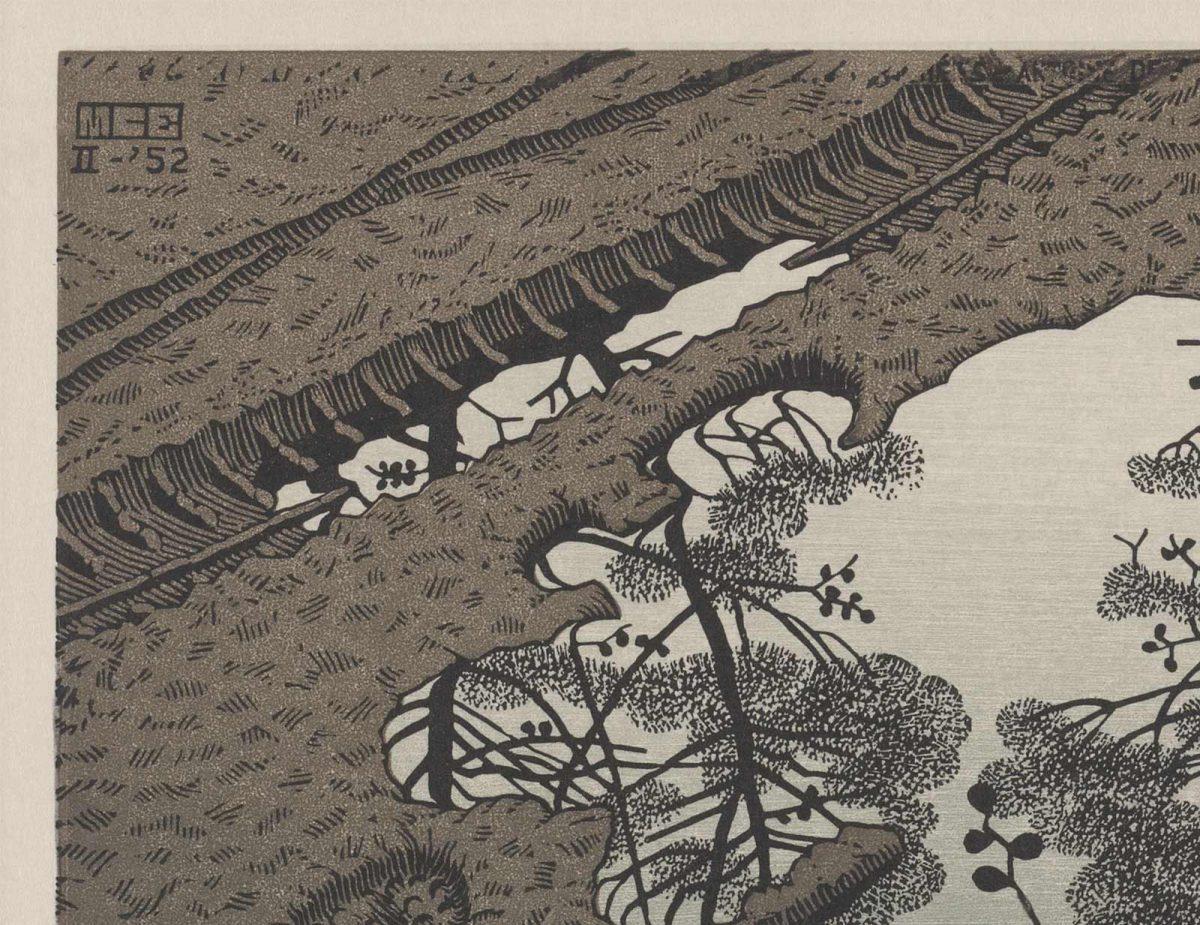
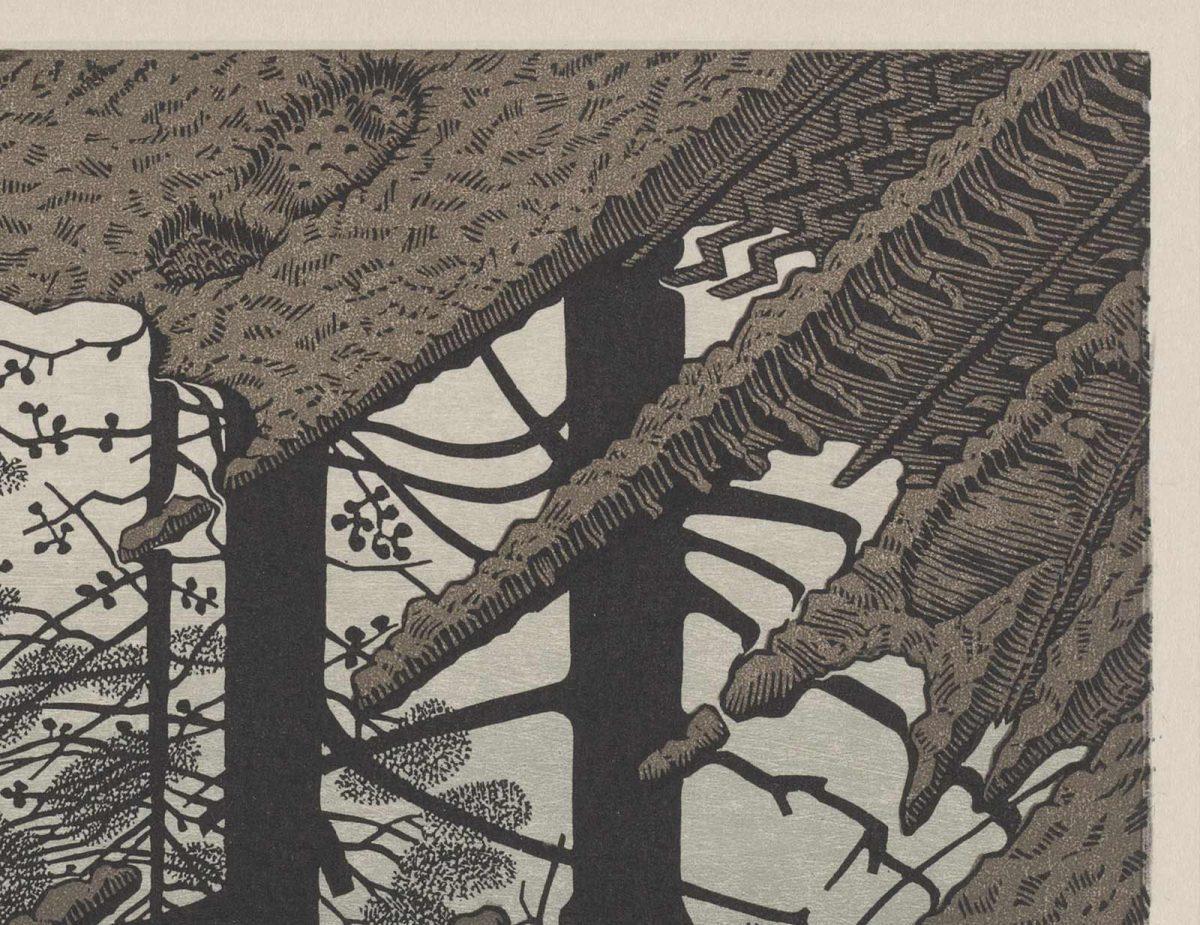
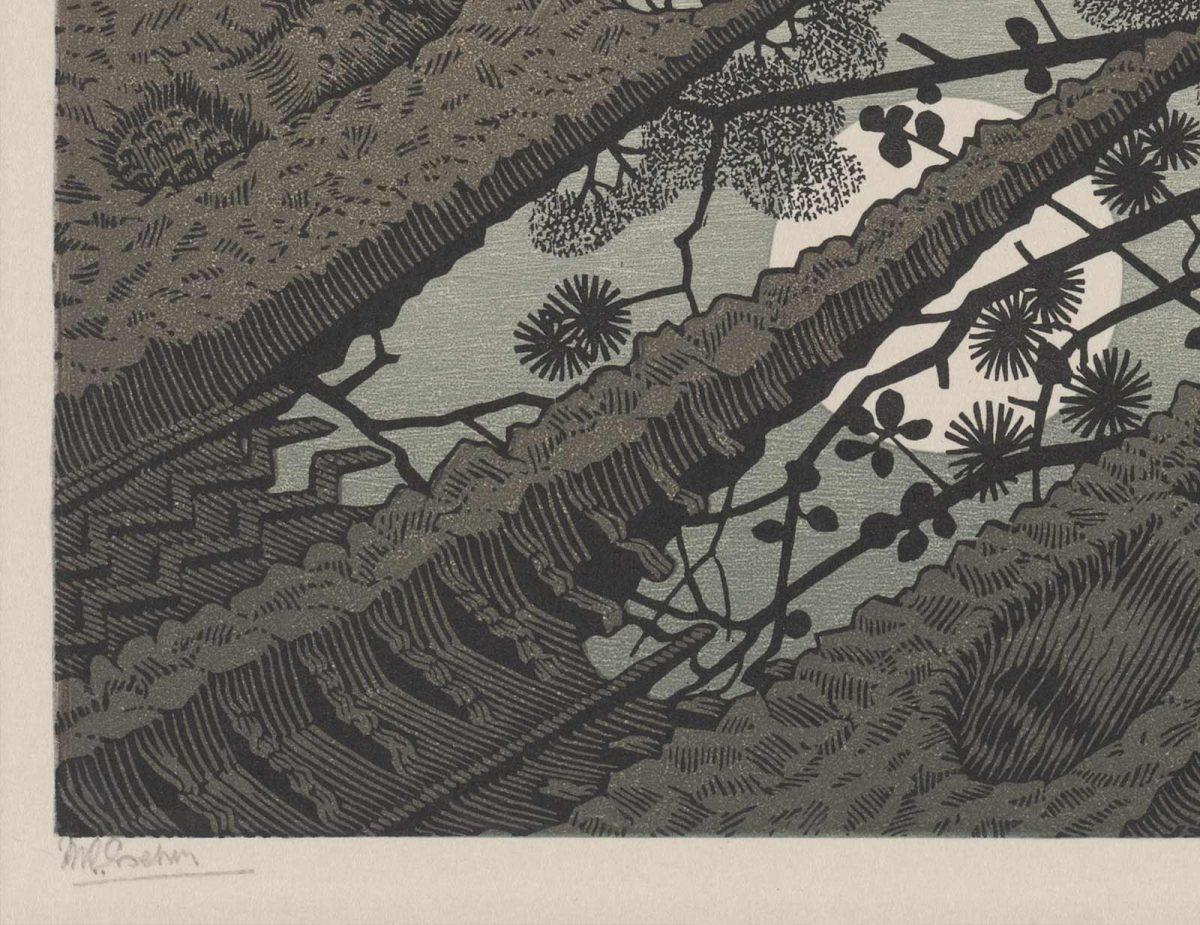
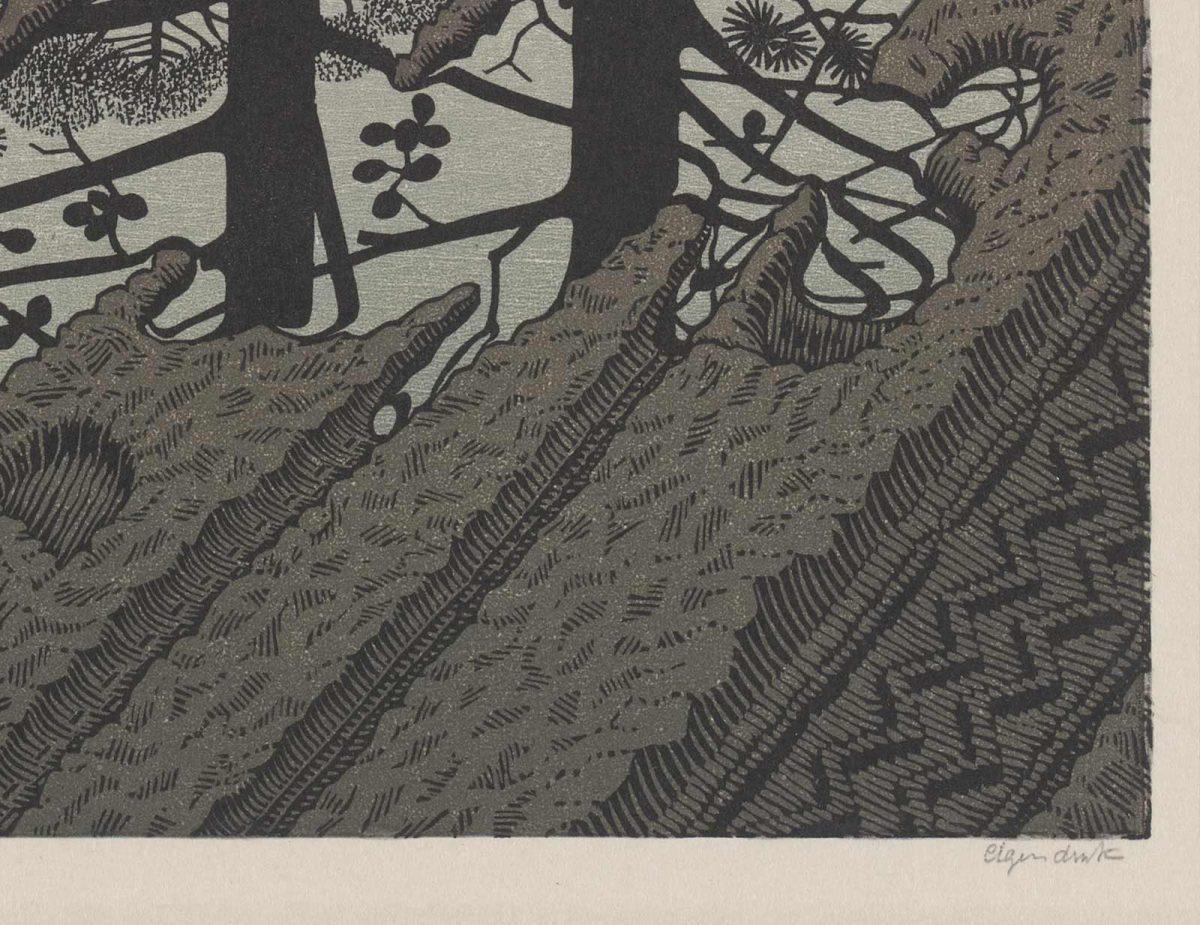
Source
[*], [**], [***] en [****] Wim Hazeu, M.C. Escher, Een biografie, Meulenhoff, 1998, page 340-341
More Escher today
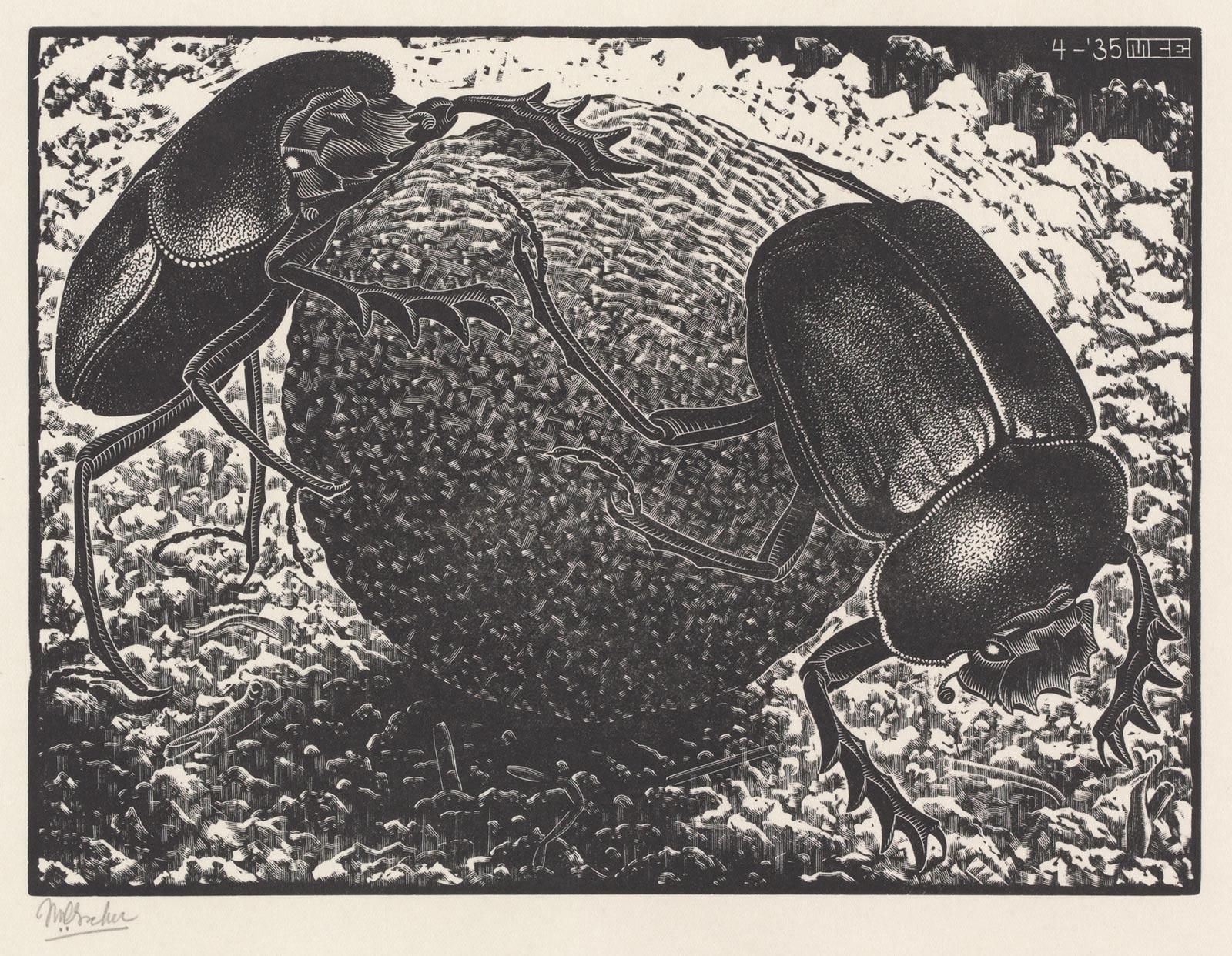
Scarabs
